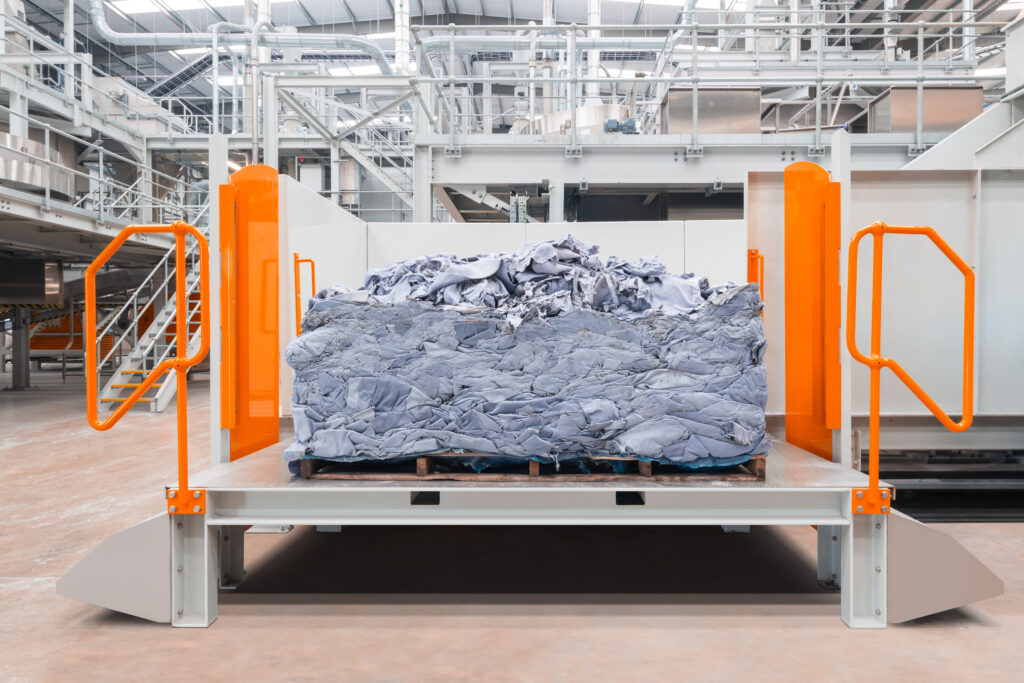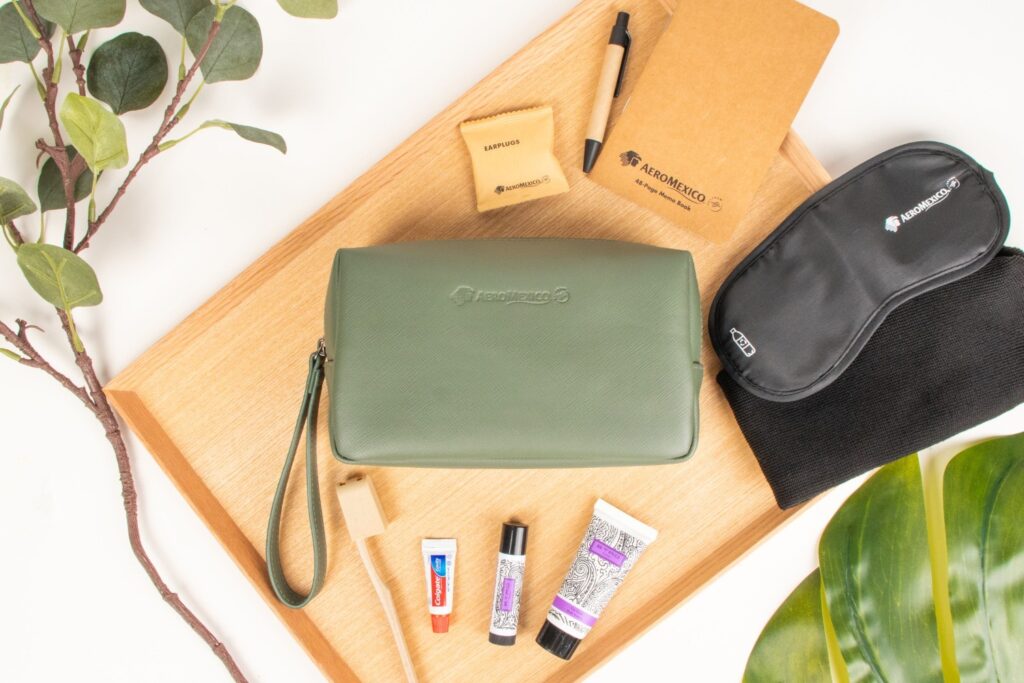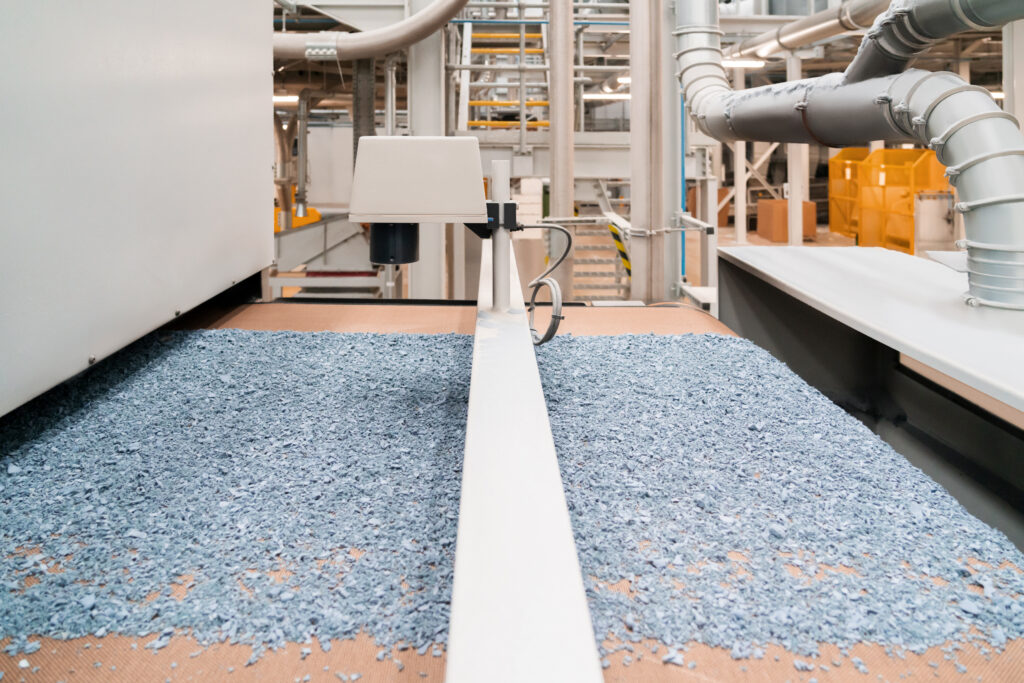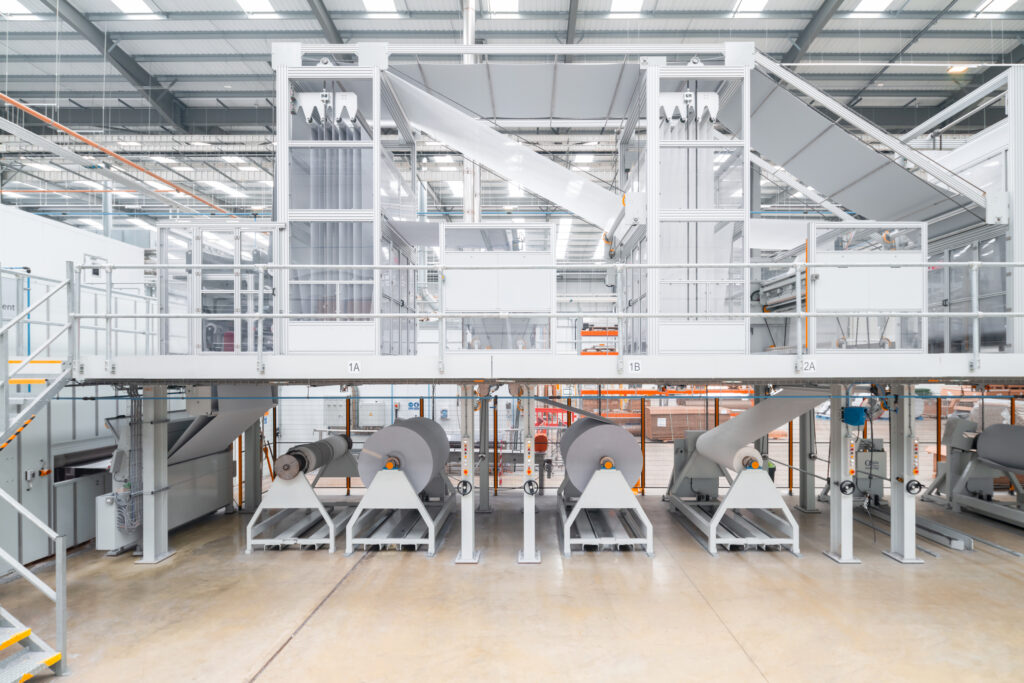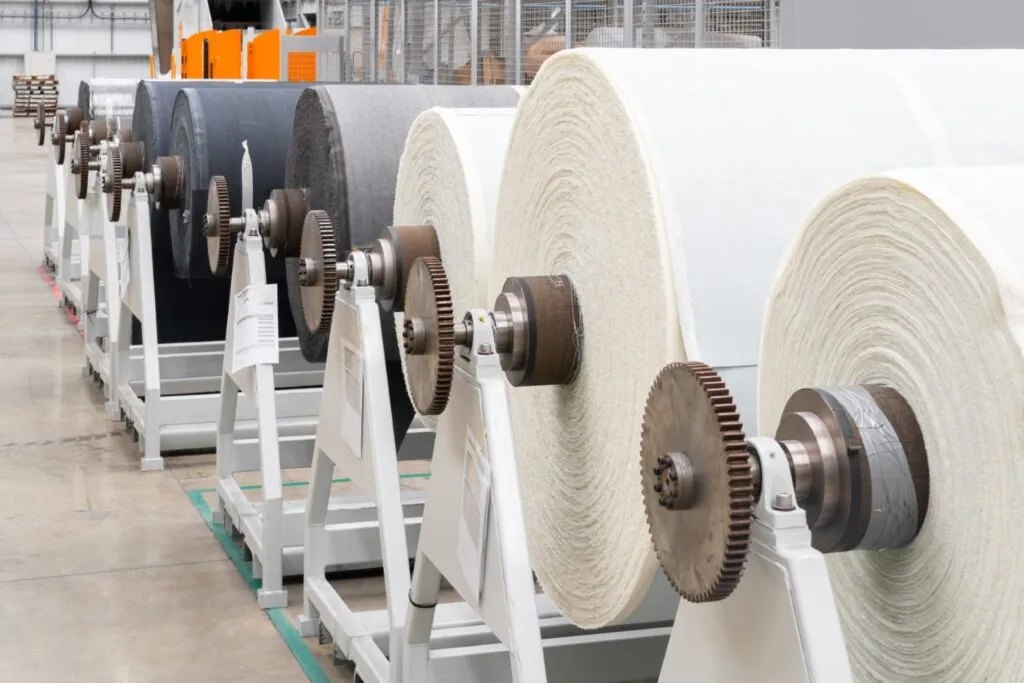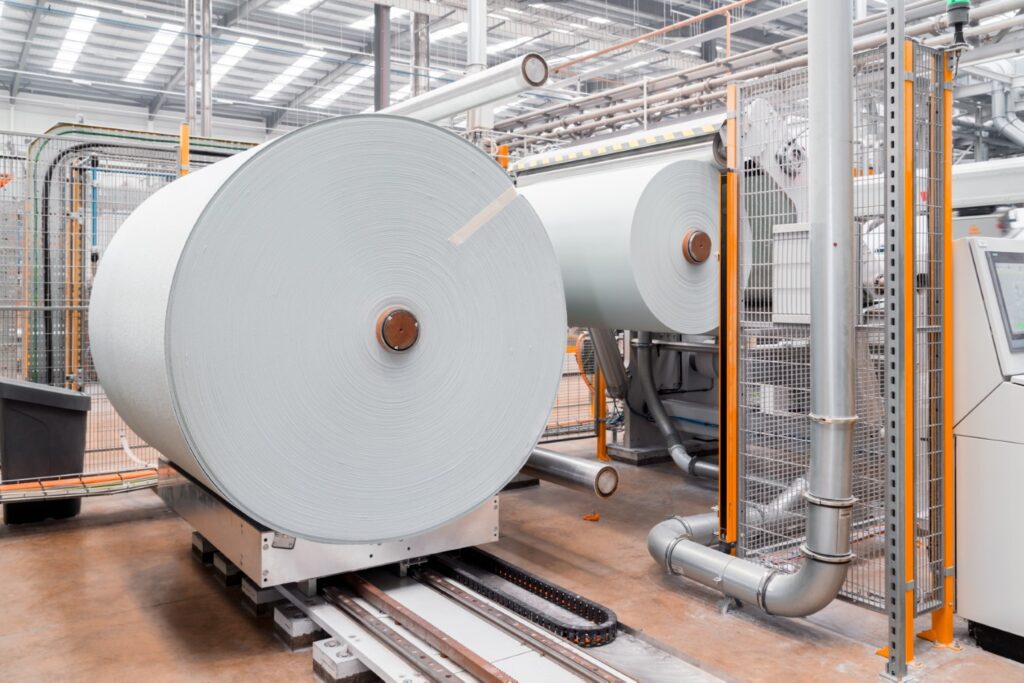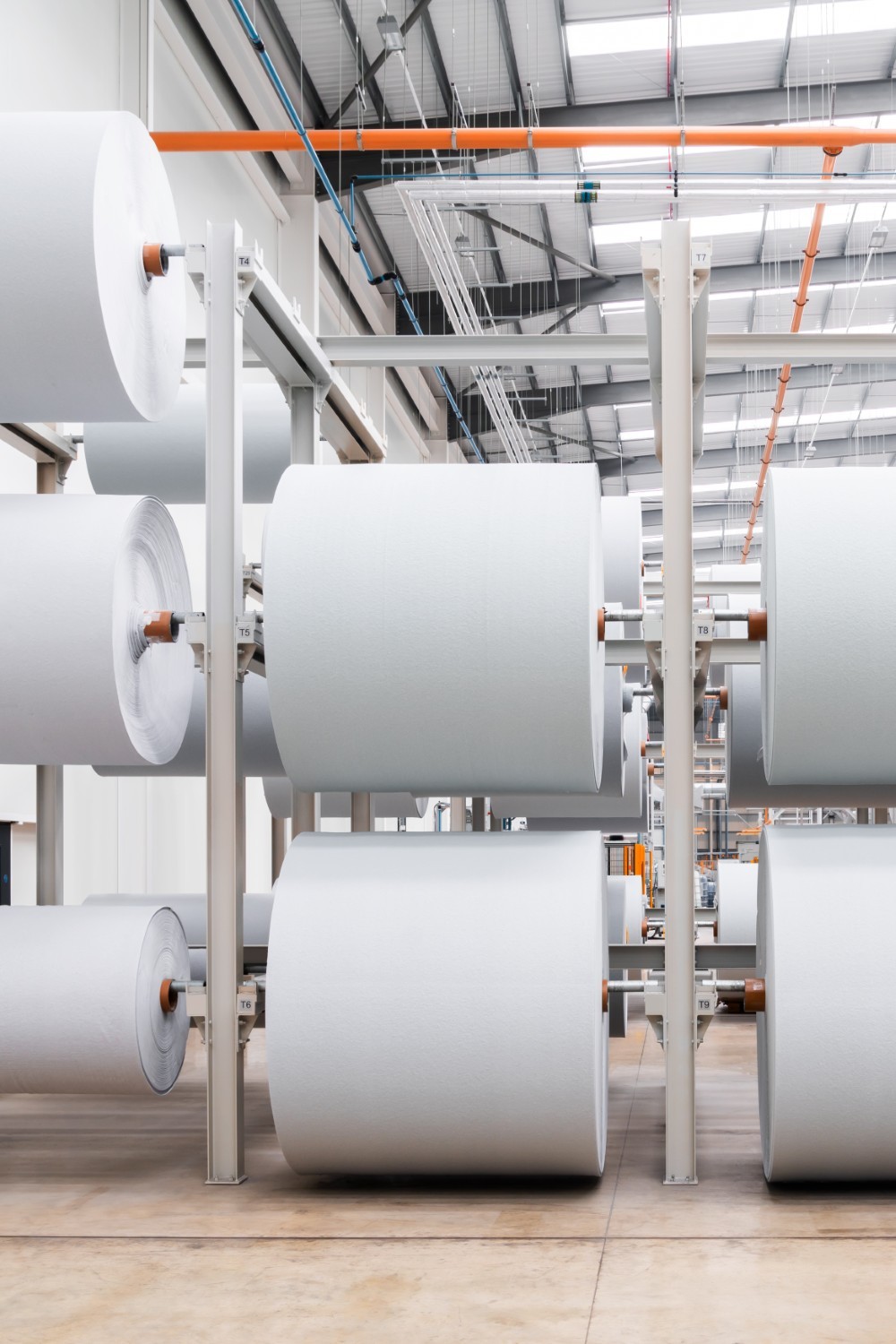PETERBOROUGH — The vast factory at the headquarters of recycled leather manufacturer Gen Phoenix immediately impresses with two key features.
First, the Peterborough, UK-based facility is large. Gen Phoenix ingests leather waste on a grand scale and transforms it into new products.
Second, the facility is highly efficient. Parallel production lines were not running at full capacity when Runway Girl Network visited, but it was clear only a handful of operators are required to run the complex, computer-controlled machinery.
Vast bales of raw material arrive at the factory. These bales comprise what’s known as ‘wet blue’ leather waste in the form of trimmings or shavings. They are the byproduct of the hide tanning process in the leather industry.
Traditionally the wet blue shavings would go to landfill or potentially be incinerated, but Gen Phoenix forms them into high quality, certifiable leather-based ELeather products for use in aviation — Delta, American Airlines, Aeromexico, Jet2, Wizz Air and easyJet are among its customers — and in consumer goods like high-end bags.
ELeather is billed as being five times more durable than other upholstery materials.
Aeromexico amenity kit using Eleather.
The process begins when the bales of raw material are broken down and their contents loaded into hoppers for milling. Since the raw materials produce fibres of slightly different character, one line is fed trimmings, the other shavings. In either case, individual leather fibres are created, their separation ensured by a process in which they are air blown.
Large transparent vessels allow a view of an operation oddly reminiscent of a Build-A-Bear store.
Around this point on the line an element of Gen Phoenix’s IP is applied. The separated fibres are then laid onto thin tissue paper and gently compressed and heated to create what the company refers to as a ‘uniform web’ and which has a somewhat fleecy appearance.
The ‘tissue’ element of the production sequence.
A high-performance textile scrim — a net-like woven material like that traditionally used in carpet making — is sandwiched between two fibre webs before high-pressure water is applied in a process known as ‘hydro-entanglement’.
Purely mechanical, hydro-entanglement forces the leather fibres into the scrim core, creating a robust and durable leather substrate.
A close-up reveals scrim at the roll edges of unfinished material.
Huge and remarkably consistent rolls of substrate emerge from the lines, ready to be fed into a third line where finishing takes place.
Rolls of uniform web material part way through the production process.
Natural oils restore properties lost during the tanning process before the material is finished with the colour and grain of the customer’s choice, using a transfer paper technique.
The paper is reused several times, minimising waste. The resulting material is then used to create practical materials, like aircraft seat covers, and materials for products people wear including statement pieces.
Gen Phoenix also proudly notes that all the electricity consumed in the factory is renewable and 95% of the water used is recycled.
Sustainability, through smart energy use and recycling, and the diversion of waste from landfill are the cornerstones of the Gen Phoenix proposition. And there is more to come.
Trials have proven that finished leather waste, either Gen Phoenix’s own material or traditional leather, can be processed in the same way as wet blue through the Gen Phoenix factory.
This would create a fully circular material solution and the company is already working with several brands to bring it to market.
Production is on a vast scale and the company offers its customers guaranteed material widths and lengths, in contrast to traditional leather tanning, where hides naturally vary in size and shape.
All images credited to Gen Phoenix
Related Articles:


